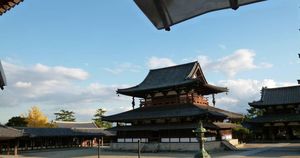Kyoto, Japan - The city has rolled out the results of its evaluation of the sightseeing special bus service, launched to tackle increased congestion among public transportation due to tourism. This review spans six months since June 2022, when the special buses began operating between Kyoto Station and popular attractions such as Kiyomizu-dera and Ginkaku-ji.
The main goal of the initiative was to alleviate the pressure on regular city buses, which have been struggling under the weight of rising tourist numbers. According to the evaluation published by the Kyoto City Transport Bureau, the special buses successfully maintained average ridership of over 2,300 passengers daily, with nearly half being foreign tourists.
While the service has reportedly eased congestion on conventional route buses, the evaluation also unearthed persistent challenges. During peak seasons, such as the autumn foliage period, there were instances where over 50 passengers queued at bus stops. The route back to Kyoto Station during busy times saw only about one-quarter of the passengers compared to those going out to the attractions.
"It’s very convenient because you can arrive quickly at Kyoto Station and tourist destinations," said one foreign tourist who visited Kiyomizu-dera, praising the potential of the service. Meanwhile, another tourist from Osaka chimed in, "I think it's good to separate the lines for local people and tourists, since it’s hard for locals to find seats." The enthusiasm of visitors contrasted sharply with frustrations expressed by local patrons.
A local resident pointed out, "I don’t think the congestion has improved just because the special bus service started," emphasizing the need for more significant changes to manage the flow effectively. Tourists also voiced mixed sentiments about the pricing, which at 500 yen is approximately double the standard fare. A visitor from Toyama remarked, "I usually choose the regular bus since the arrival time isn’t really different, even though the fare is twice as much on the special service." This highlights the balance of pricing and perceived value.
The Transport Bureau officials acknowledged the hurdles facing the special service. "Driver shortages are severe, making it difficult to expand service on weekdays and other routes. For now, we will focus on maintaining current operations and promoting use," the officials stated. This admission points to underlying limitations, even as the city celebrates the launch of its special tourist initiative.
Despite the hurdles, local businesses and tourists alike seem hopeful for the future. The need to balance the desires of sightseers and the everyday requirements of residents remains intricately woven throughout discussions around tourism management. The city of Kyoto, with its rich history and vibrant cultural heritage, certainly has its work cut out as it navigates the intricacies of modern tourism.
To encapsulate the sentiment, many agree on the need for measures to reduce congestive bottlenecks, ensuring both visitors and residents can enjoy the charm of Kyoto. Moving forward, the city’s commitment to refining the special bus service could eventually lead to solutions benefiting everyone involved.



